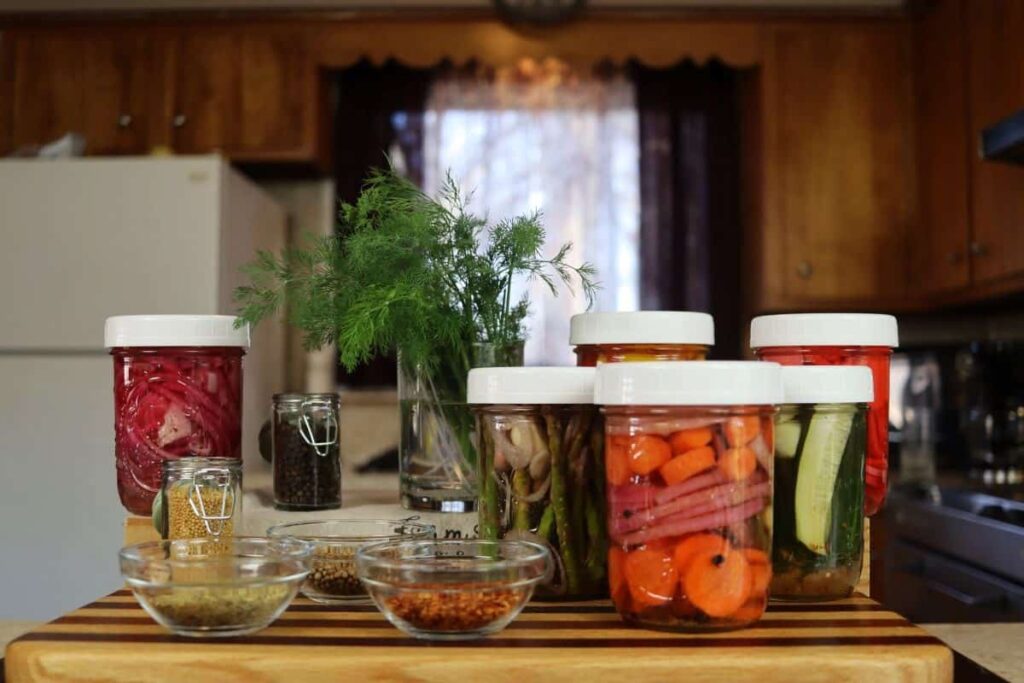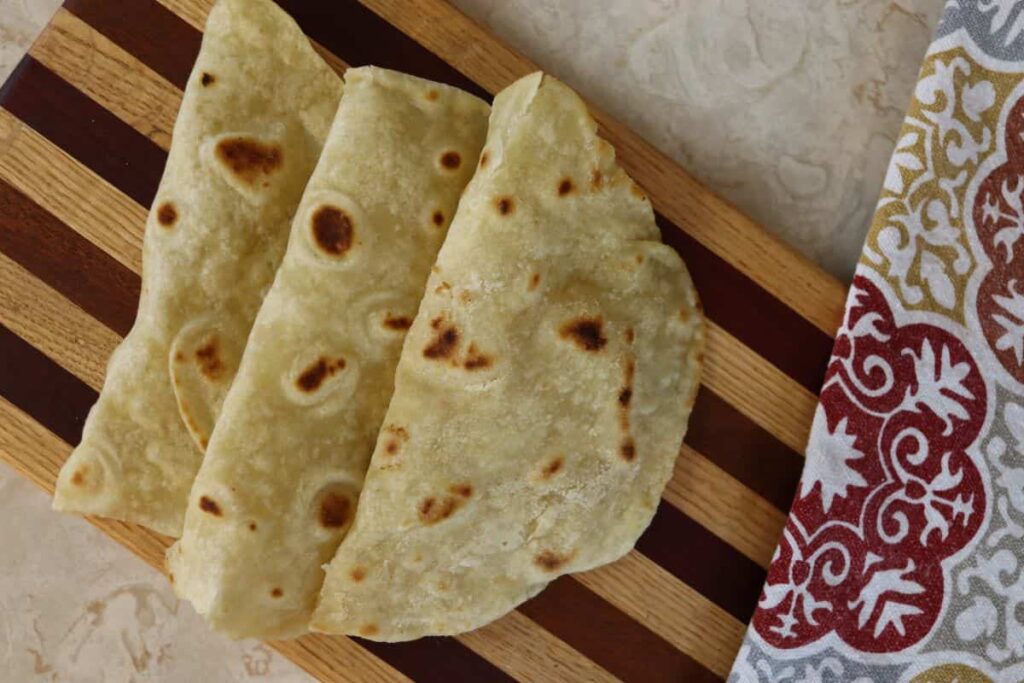How To Freeze Poblano Peppers And How To Use Them
Did you know that you can freeze poblano peppers? That’s right, you can preserve fresh poblanos or roasted poblanos by freezing them. It’s super easy to do and it’s a great skill to have in the kitchen.

I’ll be perfectly honest with you, because I believe that you need to be able to trust the information on this blog, this preservation method has it’s good points and it’s bad points.
But we’ll cover all of that, and more, later on in this post.
What Is A Poblano Pepper?
Poblano peppers are a dark green pepper that can be eaten both raw and cooked. They have a mild heat and a rich flavor. They are regularly used in Mexican cuisine.

I have found that many people compare poblanos to bell peppers. They say that they are bigger. I disagree.
Both of these peppers are comparable in size. They are simply a different shape. Bells are more stout and round. Poblanos are more elongated.
The real difference between them is how thick they are. Poblano peppers are not nearly as thick walled as bells.
If this pepper is left on the vine to ripen further than it’s deep green color, it will turn a vibrant deep red. At this point it can still be used to cook with. It will be a bit spicier, but still very mild as hot peppers go.
It is not that often that you will find fresh red poblano peppers for sale at a local market or in a grocery store. Once the pepper reaches this level of ripeness it is most often dried and sold as hot peppers; ancho peppers to be precise.
As a reference point for the heat levels of ancho peppers consider jalapeno peppers. An ancho is 8-10 times milder than a jalapeno.
The ancho pepper is well known for it’s smoky flavor.
Do I Need To Peel My Peppers?
It is often recommended that you peel this vegetable when cooking with it to prevent it from having an undesirable texture. I have never done that, so I can’t tell you how much of a difference it really makes. In my opinion, the skin is not tough in any way and leaving it on is the best way to go. I see no reason to remove it.

Perhaps one day I’ll give peeling them a try. Who knows, maybe I’ll find that it’s a much better way to eat them.
If you decide to give it a try now, note that the pepper can only be peeled after it is cooked. My understanding is that the skin is nearly impossible to remove from raw poblano peppers.
How To Prepare Poblano Peppers For Freezing
There are several different ways to prepare this tasty vegetable for freezing. You can freeze it in slices or you can freeze it whole. You can also freeze it both raw and roasted.
No matter how you freeze poblanos, you will need to remove the stem, the pith, and the seeds.
If you are freezing this pepper whole, cut around the stem and pull it out of the pepper, then use a spoon to remove the seeds and the pith from the inside. If you have a grapefruit spoon, it is the ideal tool for this task.

Most of us, myself included, do not have a grapefruit spoon. So, if that is the case for you, simply move forward and use whatever spoon works best.
If you are freezing your poblano in slices you can remove the stem, cut the pepper in half, and then remove the pith and the seeds with a knife. This is much easier to do.
But, make no mistake, it’s just not that hard to work with the whole pepper either. So take your pick.

The other two things that you need to consider when you’re preparing poblanos to hit the freezer is whether you want them to be frozen raw or roasted.
If you are freezing fresh peppers there is no further prep needed. You will find many people on the web advising you to blanch them in boiling water for 2-3 minutes before freezing them. I strongly advise against this practice.
Blanching is not necessary at all and it will cause the texture of the peppers to be quite mushy when they’re thawed. Additionally, blanching them for 2-3 minutes is way too long.
For goodness sakes, you blanch sliced carrots for 2-3 minutes before freezing them. Considering the density difference between these two vegetables you can see the error here, right?!?!
If you do decide to go with blanching, don’t leave your peppers in the boiling water for more than a minute. I’d go for about 30 seconds if I were going to do it.
If you are freezing roasted poblano peppers (or peppers cooked in any way) you can simply go ahead and cook them as you like and they’ll be ready for the freezer.
Just take care not to overcook them. Overcooking any vegetable before you freeze it is a bad idea. Go easy with the cooking process.
I rarely cook my poblano peppers before freezing them. I find that the uses for thawed raw poblanos and thawed roasted poblanos vary considerably.
Would you like to save this post for later?
We’ll touch on that subject a little later when we talk about how to use your frozen poblano peppers.
How To Freeze Poblano Peppers
Once you’ve prepared your peppers for freezing, either raw or roasted, the freezing process is the same. And it really couldn’t be easier!

Simply spread the prepared pepper slices or the whole peppers out on a baking sheet lined with parchment paper (or wax paper) and put them in the freezer for 3 or 4 hours. You can leave them in there overnight if want to, I usually do.

Just don’t leave them in there for days because they will start to develop freezer burn.
After they’re frozen, remove them from the freezer and put them in an airtight container. Then place them back in the freezer until you’re ready to use them.
This process keeps the peppers from freezing together in a big clump, as they would if you just put them in airtight containers and stuck them in the freezer without spreading them out in a single layer first.
Is This The Most Effective Method For Preserving Peppers?
As far as long-term storage is concerned, freezing is not the best way to preserve peppers. However, it is much more versatile than others methods when you consider their future use.

You will have more options for using peppers preserved in this way in your kitchen than you would with say, pickled or fermented peppers.
So, let’s talk about why this method is not a great option for preserving this vegetable …
When peppers are frozen their texture changes. This texture change happens with all vegetables that are frozen. Quite honestly, it happens with all foods that are frozen.
This texture change is not a bad thing. As a matter of fact, I often use this method to store peppers when I have a lot of peppers and I want to avoid food waste. At the very first signs of spoilage, I quickly get them frozen for later use.
I just think it’s important to point out that when you use this method to store this veggie you aren’t going to pull them out of the freezer and get the exact same thing you put in there.
If it’s the first time you’re preserving peppers this way, and you’re unsure whether or not you’re going to be happy with the results, than go ahead and freeze just one or two peppers for a few weeks and test the waters.
I think you’ll find it’s a great way to keep some of the bounty of the summer garden on hand throughout the winter. And you’re going to find plenty of ways to use them in your favorite recipes.
What To Do With Your Frozen Peppers
As I mentioned earlier, poblano peppers are used often in Mexican cuisine. If I tried to make a claim about how to use frozen poblanos in dishes from this cuisine, I would be simply reposting what I’ve read on the great big web.

I’m not familiar with these dishes. I have not done much of this style of cooking in my kitchen and it is not widely available where I live.
But I can absolutely share the ways that I use frozen poblano peppers in my own kitchen. They are a very versatile ingredient.
I love to use thawed, roasted slices of poblanos in omelets in the morning. They go well in many different varieties of this dish. My favorite way is to pair them with onions and ham. Can anyone say ‘western omelete with a little kick’?!?! YUMMY!
I use thawed roasted slices of peppers in other dishes as well. They work great in homefries, for sausage and peppers, and in sauces and soups.
I don’t often freeze whole poblano peppers; either roasted or fresh. When I do preserve them this way I usually just thaw them and roast them in the oven or on the grill to prepare them as a side dish for a meal.
They’re delicious this way, just not my personal go to in the kitchen.
I like to use thawed, fresh poblano pepper slices in my kitchen. That’s my go to for preserving them, because I find that they have the best texture when they are thawed and there are more ways to use them.
Here are some of my personal favorite ways to use them …
Sauteed and put in any dish you like, very much the same way you would use fresh poblano peppers from the garden.
They can be added to soups. sauces, and casseroles. They work great in sheet pan dinners. And they’re great for making dips and spreads that are blended well in a food processor; hummus is a perfect example of this.
Put them in tacos and fajitas (if this counts as Mexican cuisine I guess I do know a couple of dishes).
Use them to top pizza, on stuffed grilled cheese sandwiches, or you can keep it simple and just eat them as a side dish with your dinner.
So, in my kitchen, when I have an abundance of poblano peppers, I slice them and freeze them raw. I find it’s the easy way to go about preserving them and it gives the best results.
Recommended For You





I REALLY LIKE YOUR NAME:-)))
Well … Thank You! I really like your name 😉
Can you roast the slices after you thaw them?
I haven’t tried to roast them. The water content in them is high. It is worth a shot though.
Just harvested a bucket of poblanos, cleaned, roasted, frozen, on a cookie sheet then placed in a freezer bag, for future use.
I make a Mexican lasagna with the poblanos. Corn tortillas instead of pasta, layer of poblanos, layer of ground beef seasoned with taco seasoning, and cheese – all of these arranged like a regular lasagna. Rather tasty!
Oh my! That Mexican lasagna sounds heavenly 😉
I’m curious, have you tried dehydrating the poblanos?
I haven’t. Only because I have not yet invested in a good dehydrator. Cheap dehydrators, in my opinion, don’t work well enough to bother with. The only thing I have used mine for successfully is making jerky. And even then, it’s not as good as it could be with a better appliance.
Freezing poblano peppers is a great way to hold onto their deep, smoky flavor for months to come — perfect for adding to soups, stews, and all kinds of savory dishes. This method is so straightforward and practical! If you give it a try, I’d love to hear how you plan to use your frozen poblanos. Leave a comment below with your ideas or any questions — I’m happy to help!
I like your honest and straightforward style! Thank you for the tips.
You’re quite welcome. Thank you!
Can you freeze and then use them in salsa?
I wouldn’t use them in any dish that isn’t cooked. Freezing changes the texture. They will no longer have crunch. They’ll be soft when they thaw out as though they had been cooked.